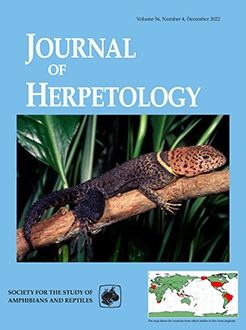Monitoring populations of cryptic reptiles is challenging because of their crypticity. Occupancy monitoring is a useful technique for local populations, but seasonal unavailability for detection can result in large swings in apparent annual occupancy. We used data from 5 yr of occupancy surveys, and the observed sampling and process error, to evaluate the power to detect true change in occupancy under a range of sampling scenarios and occupancy trends for a cryptic reptile, Mojave Desert Tortoise (Gopherus agassizii) None of the sampling strategies that we tested had the power to detect a 1% per annum increase in true occupancy over a 10-yr period and required ≥70 sites to detect a 1% decline in occupancy. For a 2% per annum change in true occupancy, 50 sites were needed and for a 3–4% per annum change 20–30 sites were needed. Power to detect a 4% per annum decline in occupancy was >80% for all number of secondary visits and number of sites if the number of sites was ≥50, but required seven visits to ≥60 sites to detect a 4% increase in occupancy Multiple sampling designs provided equivalent power. For example, both designs of 80 sites with three secondary visits and 50 sites with seven secondary visits yielded >50% power on average to detect 1–4% per annum changes in true occupancy. These results can help local managers of Mojave Desert Tortoises and other cryptic reptiles to design optimally efficient occupancy monitoring strategies.
BioOne.org will be down briefly for maintenance on 17 December 2024 between 18:00-22:00 Pacific Time US. We apologize for any inconvenience.
How to translate text using browser tools
28 March 2023
Designing a Long-term Occupancy Monitoring Plan for a Cryptic Reptile
Seth Harju,
Scott Cambrin
ACCESS THE FULL ARTICLE

Journal of Herpetology
Vol. 57 • No. 1
March 2023
Vol. 57 • No. 1
March 2023




